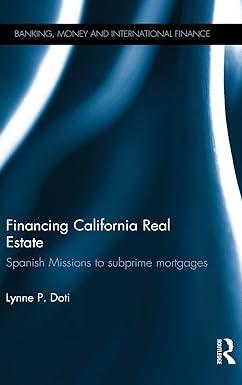Question
1.There is a 1 percent chance that you will have healthcare bills of $200,000; a 20 percent chance that you will have bills of $10,000;
1.There is a 1 percent chance that you will have healthcare bills of $200,000; a 20 percent chance that you will have bills of $10,000; a 59 percent chance that you will have bills of $1,000; and an 11 percent chance of having bills of $0. Your expected healthcare bills are? 2.A surgeon raises his charge for a procedure from $5,000 to $6,000. His contract with your insurer sets an allowed fee of $3,000. You are responsible for 25 percent of the allowed fee. 3. Different payment systems are important because 4.Under a capitation plan 5.The health insurance industry appears to be changing as 6.A study that concluded that the United States should adopt a single-payer health system is an example of 7.Rational decision making involves 8.A consultant predicts that there is a 25 percent chance of earning $500,000 and a 75 percent chance of earning $100,000. The expected profit is $200,000. The standard deviation is 9.ADC makes latex-free tubing for blood pressure instruments. 10.When outcomes are uncertain, managers need to 11.A surgeon charges $5,000 for a procedure. His contract with your insurer sets an allowed fee of $3,000. You are responsible for 25 percent of the allowed fee. 12.Which is not a challenge that affects healthcare managers more than other managers? 13.Your firm just got a buyout offer of $5 million. There is a 25 percent chance that profits will be $10 million, a 35 percent chance that profits will be $6 million, and a 40 percent chance that profits will be $2 million. You are risk neutral. Should you accept the offer? 14.When a physician understands the treatment options better than the patient, this is an example of 15.A physician has two capitated patients who pay $40 per month. One makes no visits in March, and the other makes four. The physicians fee-for service charge is $100 per visit. For these two patients, the physicians revenues for March would be 16.In the early years of the twenty-first century, managed care insurers 17.Healthcare spending has fallen as a share of the gross domestic product (GDP) since 2009. 18.Insurance makes transactions complex because A consultant predicts that there is a 25 percent chance of earning $50,000 and a 75 percent chance of earning $100,000. The expected profit is 19.According to 2013 OECD (Organisation for Economic Co-operation and Development) data, American life expectancy at birth 20.The main function of insurance is to 21.A 2007 study showing that the proportion of people with health insurance is higher among people with higher income is an example of what? 22.There is a 20 percent chance that you will earn $20,000; a 20 percent chance that you will earn $40,000; and a 60 percent chance you will earn $60,000. Your expected earnings are 23.A surgeon charges $5,000 for a procedure. His contract with your insurer sets an allowed fee of 80 percent of charges. You are responsible for 25 percent of the allowed fee. 24.Healthcare spending rose from 12.1 percent in 1990 to what in 2012? 25.A consultant predicts that there is a 25 percent chance of earning $500,000 and a 75 percent chance of earning $100,000. The expected profit is $200,000. The standard deviation is 26.Compared to Canada, France, Germany, and the United Kingdom, the United States had what in 2011?
Step by Step Solution
There are 3 Steps involved in it
Step: 1

Get Instant Access to Expert-Tailored Solutions
See step-by-step solutions with expert insights and AI powered tools for academic success
Step: 2

Step: 3

Ace Your Homework with AI
Get the answers you need in no time with our AI-driven, step-by-step assistance
Get Started


